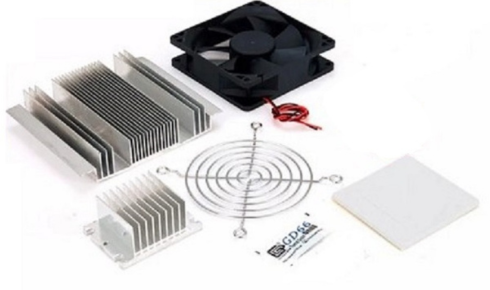Exploring the Benefits of a Peltier Module Kit and Versatile Electronic Kit Options
When it comes to learning electronics or building unique projects, having the right tools at your disposal can make all the difference. For hobbyists, students, or professionals, a peltier module kit or an all-purpose electronic kit offers not only hands-on experience but also endless opportunities for creativity and innovation. From experimenting with thermal systems to assembling beginner-friendly circuits, these kits simplify the learning curve while helping enthusiasts develop practical skills.
What is a Peltier Module Kit?
A Peltier module, also known as a thermoelectric cooler, is a fascinating device that works on the principle of the Peltier effect. When an electric current flows through the module, one side becomes hot while the other side becomes cold. This ability to create a temperature difference makes it ideal for projects involving cooling or heating.
A typical kit includes the module itself, heat sinks, fans, and power supply accessories. By assembling these components, you can explore how thermoelectric cooling works and even create mini refrigeration systems. Such kits are widely used in experiments like cooling CPUs, building small beverage coolers, or demonstrating renewable energy concepts.
Advantages of Using a Peltier Module Kit
- Educational Value – Great for science students and hobbyists to learn about thermoelectric principles in an interactive way.
- Compact Cooling Solution – Unlike bulky compressors, Peltier modules provide efficient cooling in a small form factor.
- Experiment-Friendly – They are safe, easy to handle, and suitable for classroom demonstrations or DIY projects.
- Energy Conversion – Beyond cooling, they can also generate electricity when exposed to temperature differences, making them versatile for renewable energy experiments.
Why Consider an Electronic Kit?
While Peltier modules are specialized, electronic kit cover a wide range of applications. A general-purpose kit might include breadboards, resistors, LEDs, sensors, switches, and microcontrollers. Such kits allow you to build dozens of circuits, from simple blinking lights to advanced automation systems.
Whether you’re a beginner exploring basic electrical connections or an engineer prototyping innovative designs, having an electronic kit means you don’t have to buy every component separately. These kits often come with instruction manuals or project guides, making them beginner-friendly while still valuable for advanced users.
Benefits of a Complete Electronic Kit
- Comprehensive Learning Tool – Covers basics of resistors, capacitors, diodes, and microcontrollers in one package.
- Hands-On Practice – Encourages problem-solving and experimentation with real-world components.
- Cost-Effective – Buying a kit is usually cheaper than sourcing individual components.
- Creativity Booster – Enables hobbyists to design unique projects, from home automation to robotics.
Projects You Can Build
With a Peltier kit, you can try projects like:
- Mini fridge for beverages
- CPU or GPU cooling experiments
- Thermoelectric power generation demos
With an electronic kit, projects can include:
- Simple LED-based circuits
- Digital thermometers with sensors
- Small robots or smart automation devices
Choosing the Right Kit
When buying either type of kit, consider the following:
- Skill Level: Beginners should look for guided kits with clear instructions.
- Component Quality: Ensure the modules, resistors, and sensors are durable.
- Project Variety: Choose a kit that offers room to expand your skills with multiple applications.
Final Thoughts
Both Peltier module kits and general electronic kits are excellent for anyone interested in electronics, engineering, or DIY projects. While one focuses on thermoelectric cooling and energy conversion, the other provides a foundation in circuit design and electrical systems. Together, they offer a balanced mix of practical learning and creative exploration.
For students, hobbyists, or even professionals, investing in these kits is more than just buying parts—it’s about sparking curiosity, building confidence, and developing the skills to bring ideas to life.

